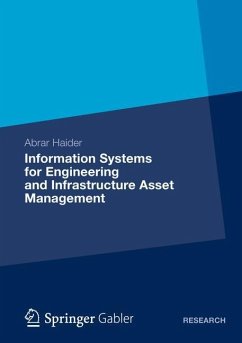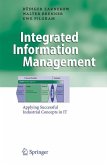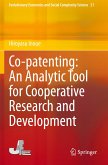Engineering and infrastructure assets maintain the lifeline of economies. It is, therefore, critical to manage these assets in such a way that they provide a consistent level of service throughout their lifecycle. Management of asset lifecycle, however, is information intensive and utilises a plethora of information systems. The role of theses systems in asset management is much more profound. It extends beyond the organizational boundaries and addresses business relationships with external stakeholders to deliver enhanced level of business outcomes. In doing so information systems are not only required to translate business strategic considerations into action, but are also expected to produce learnings and feedback that informs business strategy and aids in strategic reorientation.
Bitte wählen Sie Ihr Anliegen aus.
Rechnungen
Retourenschein anfordern
Bestellstatus
Storno








